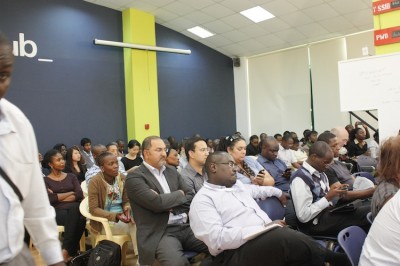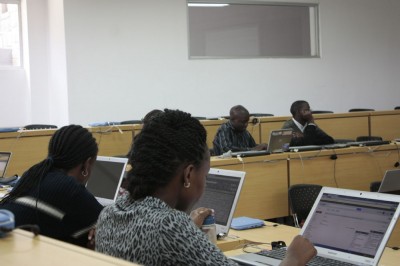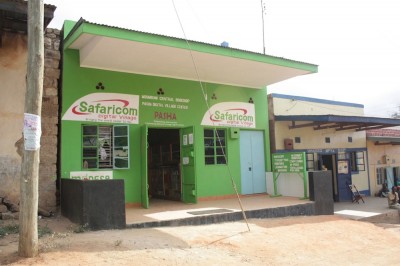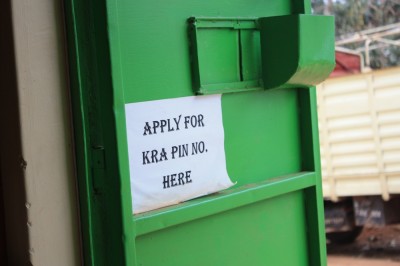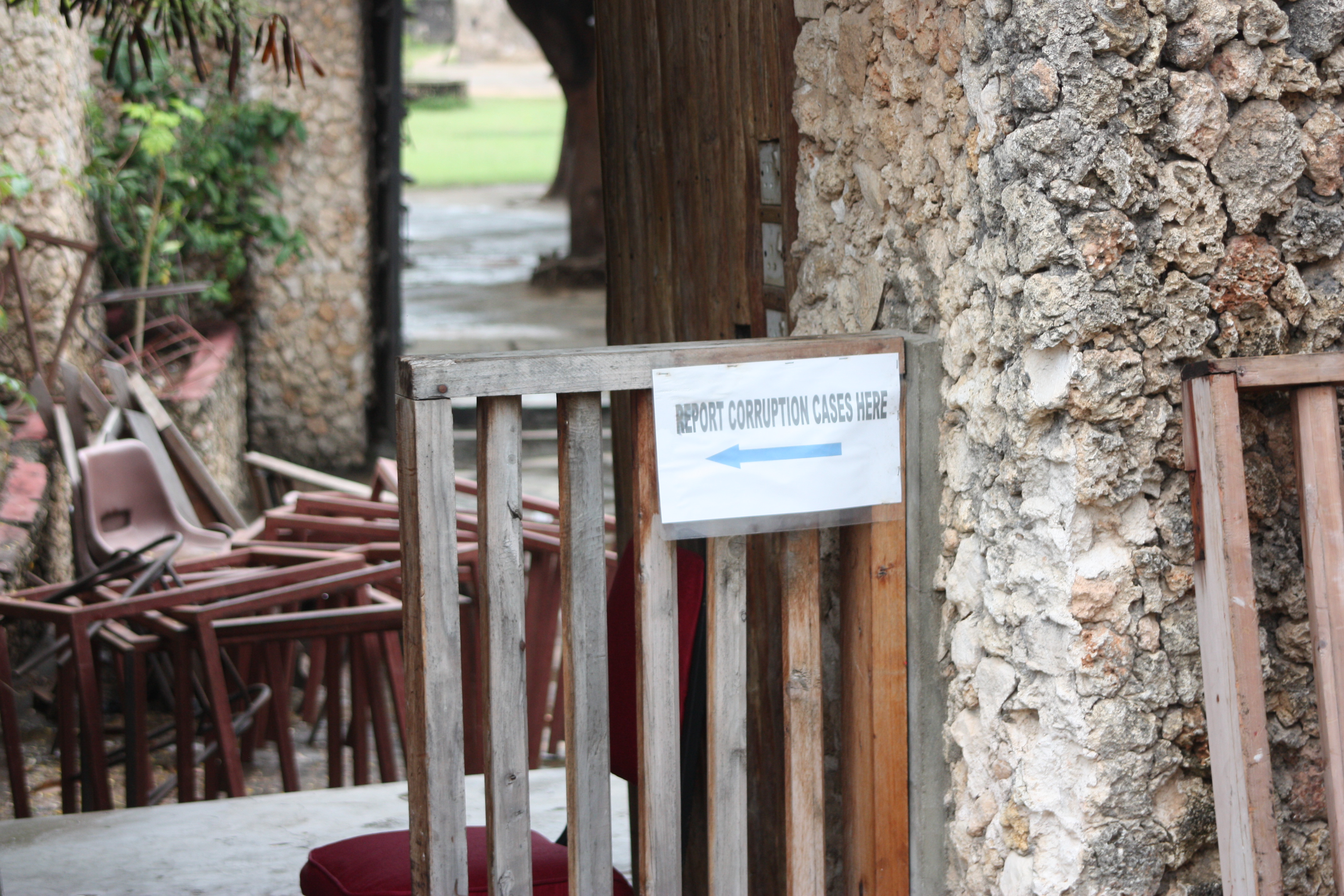Archive for the ‘mobile’ tag
Mobile in East Africa. Is Reality Finally Getting Through?
Last week, an illustrious panel was joined by a reasonably sized audience at the iHub in Nairobi for a no-holds-barred discussion on the question is the Silicon Savannah hype or reality? Andrea Bonstedt triggered the discussion earlier in the week with an article published in The Star that resulted in animated discussions online. Sitting on the panel with Conrad Akunga and Njeri Rionge, she clarified her position on “Not every techie is an entrepreneur”. There’s a good summary of the evenings discussions on the iHub blog and in this follow-up piece by Andrea.
General consensus by the panel was that there’s still a long way to go and more to be done to improve the start-up ecosystem in Kenya. In conversations with a few private equity fund managers over the last week, Andrea’s claims were supported; there is still very little potential within the sector for fund managers to grow their pipelines from tech startups.
Meanwhile, inMobi announced it was scaling down its international operations and closing down offices in Africa and Russia. These markets will now be served by their London office. This at a time when the numbers show mobile penetration as rising exponentially on the continent. In the face of declining ARPU there’s increasing demand for data across Africa and the globe but the growth of smartphones on the continent is still slow. One plus one should equal two. Rising mobile penetration plus increasing demand for data should mean (somewhere in there) that there’s huge potential in the short term for businesses providing content and services on mobile via the internet. In my opinion, the potential is probably bigger than any commentator can say. It’s my view that the problem is in the timing. Apparently, users on the continent are on their own clock and exhibiting online behavior that deviates sufficiently from the norm common in the west as to make it less attractive for businesses like inMobi to justify a physical presence here.
Within this hype-vs-reality quandary lies a question which, due to inadequate answers, is probably one of the biggest reasons tech startups on the continent struggle. What do users in the mass market do with their mobile phones and how do they do it? A study by iHub Research funded by infoDev takes a stab at this problem from a high level perspective providing entrepreneurs planning to launch products/services designed for the mass market with useful analysis.
Hype gives us all something to aspire to. Reality makes sure only products that score well on the utility vs hype ratio stay alive. It’s natural selection at its best. Until we find actionable insights on user behavior related to mobile telephony on the continent we may have little to show but hype. Without actionable insights only chance can produce apps/services people would pay for.
But what can be done to give tech startups in sub Sahara Africa a fighting chance in this difficult operating environment? I can think of three quick ways.
- Less hype more work. I am all for hackathons, pitchfests and all manner of contests that put young entrepreneurs in the lime light. I believe they are an important part of the ecosystem allowing stories to spread and giving young people something to aspire to. Let’s add to these events metrics that reward entrepreneurs who successfully bring to market their products otherwise the only story we tell is about people who build cool things. Let’s also take these events on the road to cities and towns other than Nairobi, Dar es Salaam, Kampala and Kigali.
- Teach shipping. We should find ways of teaching basic entrepreneurship in our institutions so that we help young business owners understand how to build teams and run businesses. That way they know what to look for in someone to run things for them. Most of all, more focus should be put on equipping start-ups with the skills to ship products. It’s pointless building a great app if all it ever does is get whipped out at the next challenge/competition/pitchfest. Get customers or close up shop. Those who end up in formal employment would benefit from these skills as they, by necessity, include focus, project management and strategy.
- Think business. What are we building? Who shall use it? How will we get paid for it? How will they obtain it? How will we support them? How much will it cost us to do this? How will we grow to break even? We need to spend less focus on grants and more focus on building sustainable enterprises that make more money than is spent running them. I am always surprised by the number of tech startup owners who can’t answer 5 out of 7 of the questions above.
- Learn from people. It is difficult to become an expert in a problem users face until you have met them and spoken to them. Building a solution to a problem implies that one understands it enough to be somewhat of an expert on it. Basic design thinking skills coupled with lean methodologies can provide young businesses with the agility they need to learn quickly and launch compelling solutions. Putting your product out in the wild and learning from user experiences and feedback is invaluable to a young business. Leave the attitude at home and go out the door where you can learn from other people.
The reality isn’t pretty. The mobile technology industry in East Africa, though still in its infancy, has come along way already. In this hyper-connected age, we just haven’t come far enough fast enough.
Workshop: Designing Apps for the Masses (Inoorero University, Nairobi)
Developing mobile apps for service providers can have unique challenges. During this week’s workshop at Inoorero University, participants bumped into the reality of building a mobile app or services for service providers. It calls for an understanding of not only the immediate customer (the service provider) but also of their customer. These kinds of services can sometimes be soo focused on one group that they provide a poor experience for the other and yet both groups have to be kept happy to grow a sustainable business with a highly defensible business model.
Our workshops tour continues next month.
Workshop: Designing Apps for the Masses in Africa
This past week the Semacraft team was at Strathmore University holding a workshop for the MSc Telecommunications Innovation (Safaricom Academy) students on designing apps for the mass market in Africa. We are grateful to iLabAfrica for making the event possible.
It’s always great being at Strathmore University, the campus has a great sense of And the students have great energy. Our workshop was based on Semacraft’s basic innovation model called p5 which starts with people and keeps the user at the center of the innovation process throughout the service design lifecycle. A key part of the model requires the innovator to identify personas in their market who they would plan to address. It was impressive the number of personas the participants were able to come up with, some who are well represented throughout the planet’s growth markets. The potential for new disruptive ideas does lie among our young innovators. At Semacraft we look forward to being part of the process that brings to the surface the next generation of ideas that change the way people live and work in Africa.
This workshop was the first in a series designed to equip developers with better skills in business design and improve the quality of ideas launched by young tech innovators in East Africa. The workshop series will culminate in the launch of a handbook later in the year. The next workshop will also be at a Kenyan university later this month. Follow us on Twitter to stay updated.
Government Services Intermediation: The New Role for Cybercafes.
Mbumbuni is a rural market town in Kenya’s Mbooni East District approximately 120km from Nairobi. Within the market is one of the Kenya ICT Board supported Pasha Centers and probably one of the best equiped cybercafes I have seen. When I visited the area in August of 2011, the 3G signal was poor and the center was using a GSM router connecting via EDGE to provide access to clients. The resulting experience was of course poor. For the residents in the area, the next cybercafe with a good connection is in Masii 8km away or in Wote town 50km away. For anyone wishing to register with the tax authority (a prerequisite to opening a bank account), a working cybercafe is the primary mode of accessing the authority’s online portal. There is no way of obtaining the registration at a KRA office. Cybercafes and Pasha centers charge an average of Ksh150 and as high as KSh250 to help clients complete the process and only a per minute charge for those savvy enough to login and do it themselves. For the residents of Mbumbuni, the Pasha center is their first option. Other options are guaranteed to be more expensive.
In the last four months I have travelled to parts of Kenya I only read about. Some of them almost 600 km away from Nairobi and others just an hours drive away. I have seen places where cybercafés are doing great and others where they are struggling to stay open. The landscape is varied but inspiring. Our estimates put the number of cybercafes in Kenya at approximately 2,500 most of them concentrated in the more densely populated parts of the country. Although statistics show a growing number of Internet users (35% of the population at last count), the vast number appear to be using their mobile phone as their primary gateway. Although feature phones can now provide 3G Internet access, play music and take pictures they still can’t print, scan or edit documents. With very low PC penetration in the country the rational decision is to therefore default to cybercafes for these tasks and others not yet available on mobile. Such as eGovernment.
The move by government departments and agencies such as the Kenya Revenue Authority to port services onto online spaces and then discontinue offline provision can be seen as a sign of progress. However, in using eGovernment to scale services fast across large areas at low cost, new barriers to access emerge. Digital barriers and cost barriers. These barriers have created new opportunities for cybercafé owners and Pasha center entrepreneurs allowing them to charge for a service that didn’t exist only a couple of years ago. The cyber café has now acquired a new role as an intermediary to government services introducing with it new costs of intermediation.
Whereas eGovernment presents a new opportunity for private enterprise in the form of new intermediation services, the government still needs to find ways of encouraging telcos to deploy better last mile connectivity (3G, LTE) to rural places where the financial investment may not achieve ROI in the short term. If poor connectivity remains a problem, the services may not be any closer to the people than they were before when the residents of Mbumbuni and Masii had to travel to Machakos, Wote or even Nairobi to get government services. In my opinion, there are three areas the Directorate of eGovernment and other actors in the space may consider giving priority as Kenya marches on into a fully digital future.
Better connectivity. Better 3G or LTE connectivity for the last mile to the cybercafes located in rural areas is a good place to start. Providing better connectivity could trigger consumption of data as people find utility for it. In places such as Maai Mahiu and Isinya we heard from a couple of people how frustrating spotty connections are. In Isinya, 40km from the city of Nairobi, residents opt to travel to Kajiado town or Kitengela rather than endure the local cybercafe’s unreliable connections.
Pricing Interventions / Guidelines. When intermediation services become high enough to become a bona fide barrier to access, there’s a problem. Ksh250 is enough to feed a family of four for a day or two. In areas where government services are only available online, this could mean that some families opt out of crucial government services they shouldn’t be having to do without. The initial premise is to bring services closer to the people. High financial costs neuter that objective. Introduction of price caps that keep it financially interesting for enterpreneurs to provide access to these services while remaining accessible to the majority of the people maybe an option worthy of some consideration.
Design for mGovernment. 24 million mobile devices are hard to ignore. Policy guidelines that allows government departments to design and deploy services on the mobile platform should be a priority in the short term. If bringing services closer to citizens is a priority, the mobile handset is as close as it can get.
As new formal intermediaries to government services begin to emerge with the rollout of new infrastructure and services, governments need to keep everyone in the ecosystem on the same page. Cybercafe owners need to remain motivated to provide the services, government departments need to create and train technical and customer care teams and citizens need to be educated on how to access and utilize these services.
From Open Data to Open Action
“The thing to remember is, Human beings do not socialize in a completely random way. There’s a tangible reason for us being together, that ties us together. Again, that reason is called the Social Object.” Hugh MacLeod
The Open Government Partnership declaration commits members to support civic participation in addition to making data on government activities open to the public. In Africa, Kenya made history as the first country in sub-Sahara Africa to implement an open data initiative giving citizens unprecedented access to valuable datasets. 40 countries, 5 of them African countries, have since signed up to the OGP and I believe they are at different levels of following through on the spirit of the declaration.
The value of open data to citizens is unquestionable. This year, Kenyan software developers have launched mobile apps that leverage open data to provide services to citizens. They have mostly been in the healthcare and agriculture verticals but services in education and entertainment have begun to emerge. These are very encouraging signals coming out of a country that only a decade or two ago made it almost impossible for citizens to know what the government was doing. These apps may not have been possible without access to the huge amount of data the government holds and is now making available to software developers.
However, we shouldn’t think of only mobile and the web when we talk about leveraging open data. “To turn raw data into ‘edible’ content that citizens can consume and make decisions with” should be the overarching objective for anyone looking to improve citizen participation in governance through open data. This edible bits of content should be easily consumed on the now ubiquitous mobile devices in Africa as well as on old fashioned news print and billboards. Jyri Engestrom refers to social networks as “object-centered sociality” meaning people connect because they have a reason to and that reason is usually an object (in the loose sense of the word). Moving from mere intentions to action may start with little more than an object (physical or otherwise).
